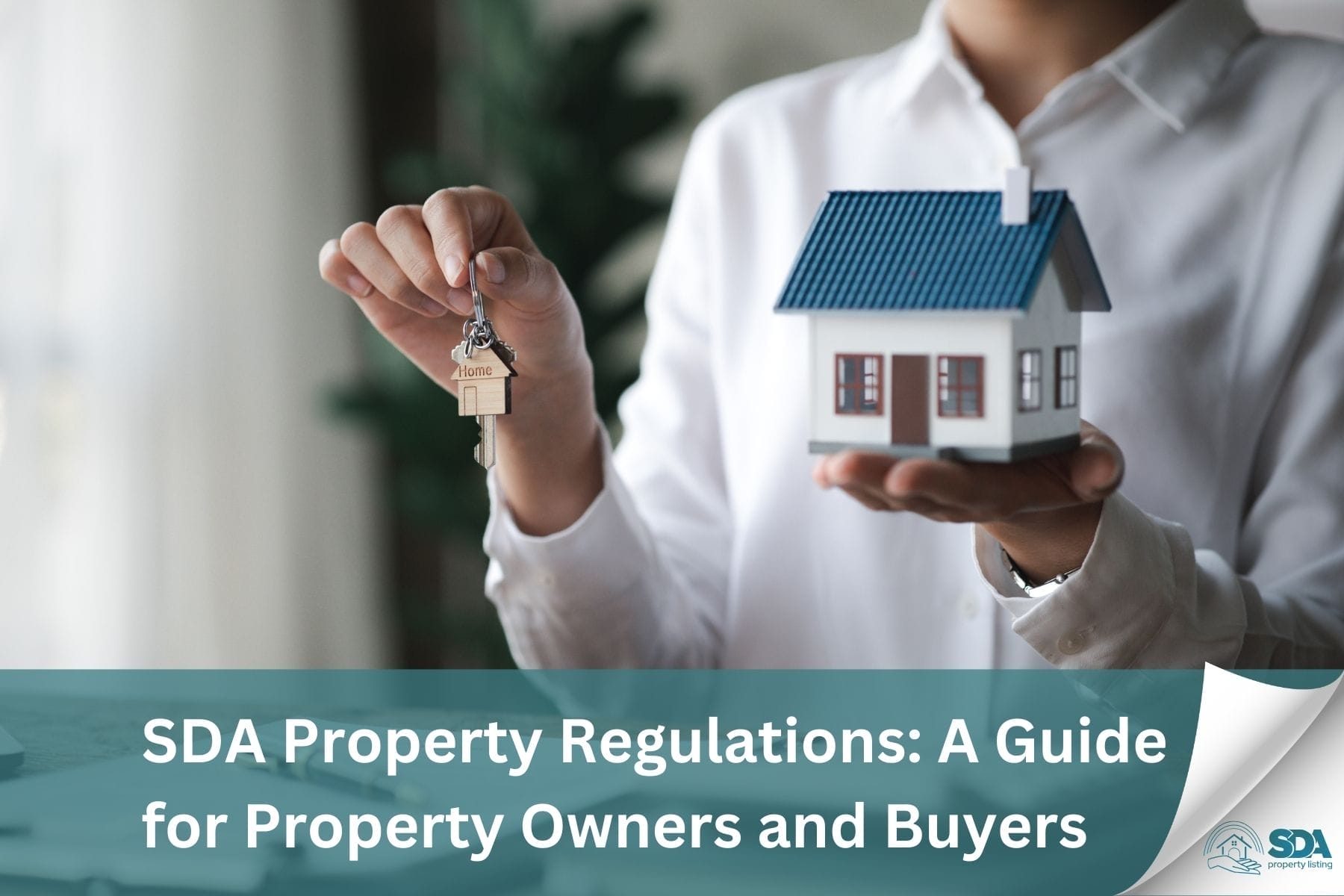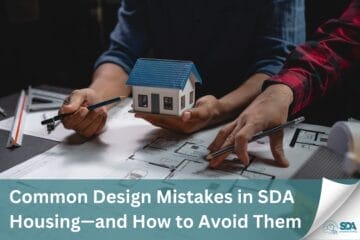
SDA Property Regulations: A Guide for Property Owners and Buyers
Ensuring compliance with Specialist Disability Accommodation (SDA) regulations is a crucial part of SDA property ownership and purchase in Australia. This requirement has been broadly instituted for all homes intended for persons with disabilities. By meeting these regulations, property owners ensure that their properties are eligible for NDIS funding. The following is a short guide to understanding and working within SDA requirements which will help owners remain compliant, while still providing accessibility and high-quality residences.
SDA Design Standards
The SDA Design Standard lays down certain rules for constructing buildings that are meant for individuals with disabilities. It distinguishes four types of SDA houses based on their respective levels of ease of access and amount of assistance required:
1. Improved Liveability
This category was designed for individuals with sensory, intellectual, or cognitive disabilities. This includes features like enhanced lighting and the use of contrasting colors. Accessible designs are also incorporated to improve usability and promote independence. The aim of these properties is making homes more functional, enabling individuals with various types of disabilities to go about their daily lives more easily.
2. Fully Accessible
Homes under this category serve individuals with significant physical disabilities. They require step-free access, wider doorways, and reinforced bathrooms to allow free movement and comfort of the residents using mobility aids. Adjustable fixtures are also part of fully accessible homes so that residents can carry out certain activities independently.
3. High Physical Support
Individuals who require complex physical assistance are the primary residents for this category. For instance, buildings of this nature could have mechanisms such as ceiling hoist implementation plans and back-up power to be on standby. To help individuals with restricted movement, such homes may also contain sophisticated communication systems, allowing them to undertake their routine activities safely.
4. Robust
This category is for individuals whose conduct may require reinforced security. Robust homes are constructed utilizing long-lasting, impact-resistant materials. Their foundations incorporate strengthened walls, doors as well as soundproofing to ensure a safer environment, so as to lower hazards and provide a secure living space for tenants. The aim of these reinforcements is to create a conducive and quiet environment that enhances the lives of those who need such assistance.
Key Steps for SDA Compliance
Complying with SDA regulations regarding a property involves different steps; from designing it to maintaining it. Here is a guide that would aid in adhering to these rules:
1. Design and Construction
The property must be constructed in a way that matches one of SDA design standard categories according to the needs of the eligible participants. Work closely with architects and builders well-versed in SDA regulations to guarantee adherence. For example, houses meant for individuals who require High Physical Support should have room for complex movement devices while robust houses require tough, impact-resistant buildings to counter possible hazards.
2. Engage SDA Consultants
Engaging with certified SDA consultants from the onset of planning is very important. SDA consultants have knowledge of the SDA regulations and therefore are able to guide you in terms of the design and construction, making sure that everything complies with what is required by compliance. Their early involvement can help pinpoint possible areas of concern before these issues become difficult or impossible to change without incurring extra costs.
3. Assessment and Approval
After construction, the property must be assessed to confirm it meets SDA design standards. An accredited SDA assessor carries out this evaluation based on key aspects like accessibility, safety and durability. A certificate of SDA category compliance is issued in line with all necessary requirements after the evaluation. This assessment involves a design stage assessment and a final as-built inspection. The property may then be listed as SDA-approved and entitled to NDIS funding once it is approved by the NDIA.
4. Ongoing Compliance and Maintenance
The approval of compliance is only the beginning. Regular maintenance of both exterior and interior will ensure that SDA standards would continuously keep being satisfied by the property. This means scheduling frequent inspections, noticing any damage early and staying informed about regulatory updates which may affect your compliance status.
Although property owners manage maintenance, authorities like the NDIS Quality and Safeguards Commission may conduct periodic checks to ensure properties meet required conditions. Regular inspections by these bodies help ensure the housing remains suitable and accessible for the community.
Considerations for Investors
SDA properties have the potential for a profitable investment; however, it is necessary to adhere to the regulations. Here’s what to keep in mind:
1. Property Location
It is best to pick areas where there are many NDIS participants to ensure that the demand will always be there. In addition, the location should be within reach of support workers and in proximity to community services. A good location attracts more tenants as well as enhances the efficient provision of care services. The quality of life of eligible participants can also be enhanced by close proximity to local amenities.
2. Long-Term Maintenance
It is of utmost importance to provide regular upkeep, particularly for properties that fall under the categories of High Physical Support or Robust. In order to maintain the property in compliance and condition, regular inspections should be scheduled, and repairs should be made on time. Continuous maintenance helps avoid compliance problems and also increases tenant satisfaction. Additionally, proactive management may extend the life of the property and retain its value.
3. Higher Returns with Compliance
Compliance with SDA property requirements ensure access to NDIS funding, which can help secure consistent rental income based on the set pricing structure determined by the NDIS. By remaining compliant, it is possible to benefit from this funding while avoiding reduced demand and expensive adjustments. Apart from securing financial gains, investing in compliance also enhances the positive reputation of SDA properties.
Conclusion
Adhering to SDA Design Standards helps in making sure that the accommodation meets the needs of individuals with disabilities and remains qualified for the funding offered by the NDIS. For investors, complying with these regulations not only offers long-term financial benefits but also contributes to building inclusive communities, providing essential housing for individuals with disabilities.








